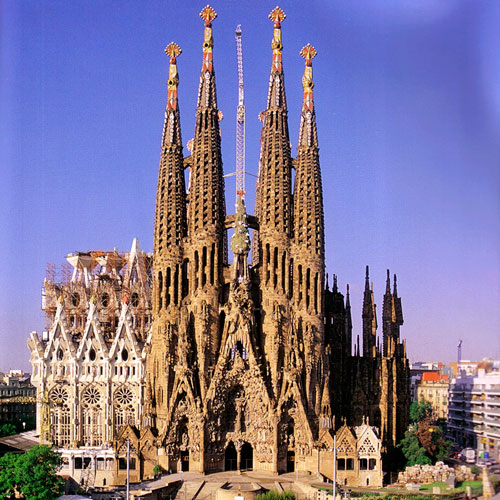Art Nouveau
 From 1880s till the First World War, Western Europe
and the United States witnessed the development of a new art movement called
“Art Nouveau”. The two major influences of Art Nouveau were from the Art and
Crafts movement by William Morris and the Japanese art style during that time. Art
Nouveau style could be divided into two; one that consisted more of natural and
organic shapes and design while the other that consisted more of geometric
shapes. Organic Art Nouveau style is mostly influenced from nature and flow.
Artists and designers were influenced by Art Nouveau thus many paintings,
furniture and buildings were created with this new form of style. One could
even find this art style in posters as well. The aim of this movement was to
modernize design by using different and more new materials instead of the
traditional ones. Art Nouveau started to lose its popularity during the 1920s,
when fashion started to give way to Art Deco but made another come back during
the 1960s in which is now seen as an important influence during the Modernism
movement.
From 1880s till the First World War, Western Europe
and the United States witnessed the development of a new art movement called
“Art Nouveau”. The two major influences of Art Nouveau were from the Art and
Crafts movement by William Morris and the Japanese art style during that time. Art
Nouveau style could be divided into two; one that consisted more of natural and
organic shapes and design while the other that consisted more of geometric
shapes. Organic Art Nouveau style is mostly influenced from nature and flow.
Artists and designers were influenced by Art Nouveau thus many paintings,
furniture and buildings were created with this new form of style. One could
even find this art style in posters as well. The aim of this movement was to
modernize design by using different and more new materials instead of the
traditional ones. Art Nouveau started to lose its popularity during the 1920s,
when fashion started to give way to Art Deco but made another come back during
the 1960s in which is now seen as an important influence during the Modernism
movement.
This very large Catholic Church built by Antoni
Gaudi combines both Gothic and Art Nouveau style of architecture beautifully.
What’s interesting is that I find both of these style direct opposites of each
other; Gothic is more geometrical and pointed in form while on the other hand
Art Nouveau is more organic and flowing in style. The building was never
complete and to this day, the building’s construction is being continued. As
mentioned before, the building has a beautiful balance of organic and geometric
design. The building also has a sort of value balance because of its
interesting mixture of lines as a decorative feature. The position and size of
the pillars in the middle also help to make the building more attractive and
pleasing to the eye.
Art Nouveau Lillies by Sabina Frank
 This contemporary Art Nouveau style stained glass
has a simple yet effective decorative design. The colours complement each other
while the position of the flowers gives a balance of positive and negative
space. There is also a balance of organic and geometric lines as well.
This contemporary Art Nouveau style stained glass
has a simple yet effective decorative design. The colours complement each other
while the position of the flowers gives a balance of positive and negative
space. There is also a balance of organic and geometric lines as well.
References
1.) Gontar, Art Nouveau, Available from: http://www.metmuseum.org/toah/hd/artn/hd_artn.htm, [20 Novemeber]
2.) The Art Story, Art Nouveau, Available from: http://www.theartstory.org/movement-art-nouveau.htm, [20 November]
